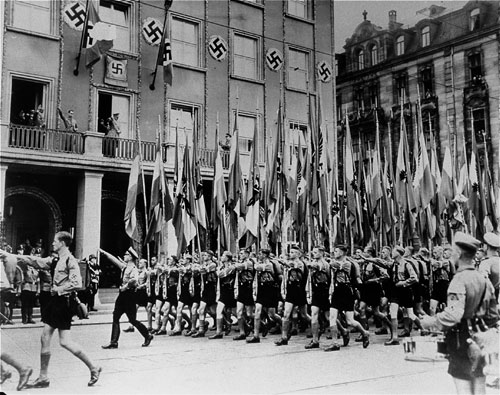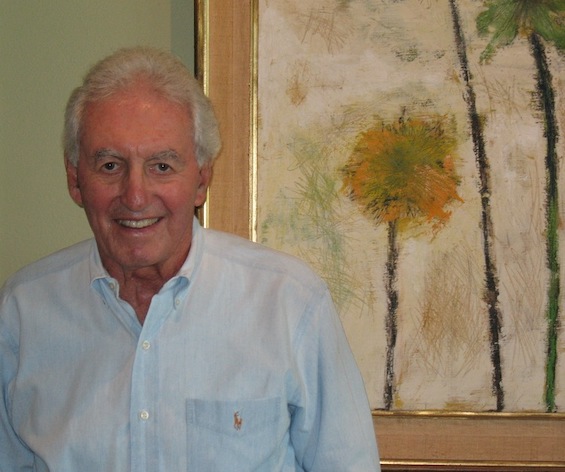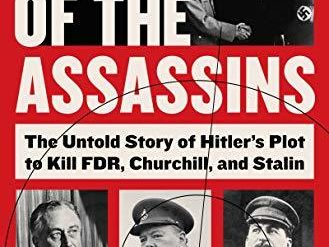
When we consider the fate of the Jews in Europe during the Nazi years, our thoughts tend to drift toward stereotypical images. The gas chambers at Auschwitz and other death camps. And doomed Anne Frank cooped up in hiding for two years until she was betrayed. Both images are accurate, as they reflect the experience of millions of European Jews. But there were exceptions, and their experiences tell us a great deal about life in Nazi-dominated Europe. Author Leonard Gross does an excellent job conveying the alternate reality they represented in The Last Jews in Berlin. Yes, it’s true. Jews survived the Holocaust in Berlin.
How the book came about
Gross, an author best known for his novel The Memoirs of JFK, did not begin the project that resulted in this book. “The interviews on which much of this book is based,” he writes at the outset, “were actually begun a decade before I became involved… In 1967 Erik Lasher, an editor and writer, journeyed to Berlin in the hope of finding Jews who had spent the entire war in that city. . . Eighteen men and women responded” to advertisements he placed in a Jewish community newspaper published there. “He interviewed all of them, as well as other survivors to whom their stories led him. All the interviews were extensive, and all of them were taped.
“However, Lasher was unable to continue work on the book” because it upset him so much. Several years later, he told Leonard Gross about the project and agreed to place it in his hands. Although eleven years elapsed between Lander’s interviews and Gross’s followup trip to Berlin in 1978, he was able to corroborate the essentials and most of the details they related. The Last Jews in Berlin is the result. When the book finally saw print in 1982, it became a New York Times Bestseller.
Keep in mind that the original interviews on which this book is based were conducted in 1967, just twenty-two years after the end of World War II, when memories of the time were still vivid in many survivors.
The Last Jews in Berlin by Leonard Gross (1982) 354 pages ★★★★★

A rapidly shrinking community
Surprisingly, even by the close of hostilities in May 1945, a thousand Jews survived in Berlin. They were but a shadow of the vibrant community of 160,000 people that existed when Adolf Hitler came to power in 1933. [A total of some four million people lived in metropolitan Berlin at the time.] The city’s Jewish population was “approximately one-third of a German-Jewish population of 500,000 persons who, by and large, considered themselves at least as German as they were Jewish.” Jews had made innumerable contributions to the nation—in science, business, the arts, medicine, and law . And they had volunteered and fought for the German Empire in World War I in disproportionately large numbers. Despite all that, “by September 1, 1939, when World War II began [in Europe], the Jewish population had been cut in half.” Hundreds of thousands had fled, committed suicide, or fallen victim to murders perpetrated by Nazi thugs.
Many Jews still in Berlin when the “Final Solution” began
By the time of the notorious Wannsee Conference on January 20, 1942, where the Nazi hierarchy agreed on the “Final Solution,” propaganda minister Joseph Goebbels estimated that “there are still 40,000 Jews in Berlin.” For a year, Goebbels lobbied Hitler to authorize the complete removal of Jews from the nation’s capital. Finally, on “February 27, 1943, units of Hitler’s elite corps, the S.S., undertook a lightning roundup of Berlin’s Jews.” They were predictably efficient.
However, official figures as of March 31, 1943, a month later, showed a Jewish population of 18,515. Most of those were “protected” under provisions of the racial laws. But at least 4,000 Jews remained free in the city, forced underground because they had no such protection. The subjects of Lander’s and Gross’s research were among them. Many, but far from all, were captured and deported to the death camps by the end of the war. An estimated one thousand survived the war.
Jews who survived the Holocaust
To tell the story of thousands through the experience of a handful, Gross carefully selected survivors whose experiences struck him as representative. His subjects included:
- a resourceful jeweler who fed his family and secured lodging for them at exorbitant prices by trading on the black market
- a teenager, 17 years old in 1942, the oldest of three sons of a Jewish father and a Christian mother who had converted to Judaism
- an “avant-garde intellectual” who wrote plays throughout the war that were produced in the name of the Christian woman he was living with
- a poor Jewish man with an encyclopedic knowledge of theater and the opera
- a blonde, blue-eyed woman and her husband who survived in plain sight for months because they looked “Aryan”
But equally compelling as characters in this life-or-death drama are the Christians who housed and protected Jews gone to ground.
The pivotal role of Christians who helped
“None of the Jews who went underground in Berlin or elsewhere in Germany could have survived without the help of at least one Gentile benefactor,” the author asserts. For several of Gross’s subjects, many Christians—especially Catholics—helped. In at least one case, a whole neighborhood came together to protect a Jewish couple because the man had acted heroically to put out a fire caused by a bombing that threatened their homes.
The most engaging character in the book may well be the Countess Maria von Maltzan, a veterarian, the elegant daughter of a powerful conservative nobleman and his stridently antisemitic wife. She didn’t just hide scores of Jews at her large Berlin residence but actively participated for years in the German Resistance. (Yes, there was a Resistance movement. It was small, and far less active than in countries such as Poland, France, and Yugoslavia, but it was real.)
And some of the most surprising and gratifying stories in The Last Jews in Berlin involve the campaign undertaken by the Church of Sweden to hide and then ship to sanctuary in Sweden hundreds of Jews. This, despite the fact that antisemitism was rampant in Swedish society, the country passed the Nazi racial laws, and the Swedish military and security services were notoriously pro-Nazi.
About the author

In an obituary for his father, Linden Gross wrote that Leonard Gross (1928-2015) “was the author, co-author or ghostwriter of 23 books, including several bestsellers and recently self-published The Memoirs of JFK, a novel based on interviews he conducted with 50 of Kennedy’s inner circle after the President’s death. Five other novels were dual main selections of the Literary Guild. Two days before he passed, Leonard’s nonfiction book The Last Jews in Berlin, hit #8 on the Amazon bestseller list and #5 on B&N when its new electronic publisher ran a promotional campaign.”
For more reading
Check out 18 good books about the Holocaust, including both fiction and nonfiction and More than 30 worthy books about Jewish topics.
You might also enjoy:
- 10 top nonfiction books about World War II
- The 10 best novels about World War II
- 7 common misconceptions about World War II
- The 10 most consequential events of World War II
And you can always find my most popular reviews, and the most recent ones, plus a guide to this whole site, on the Home Page.


























